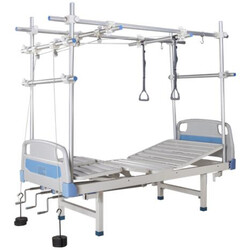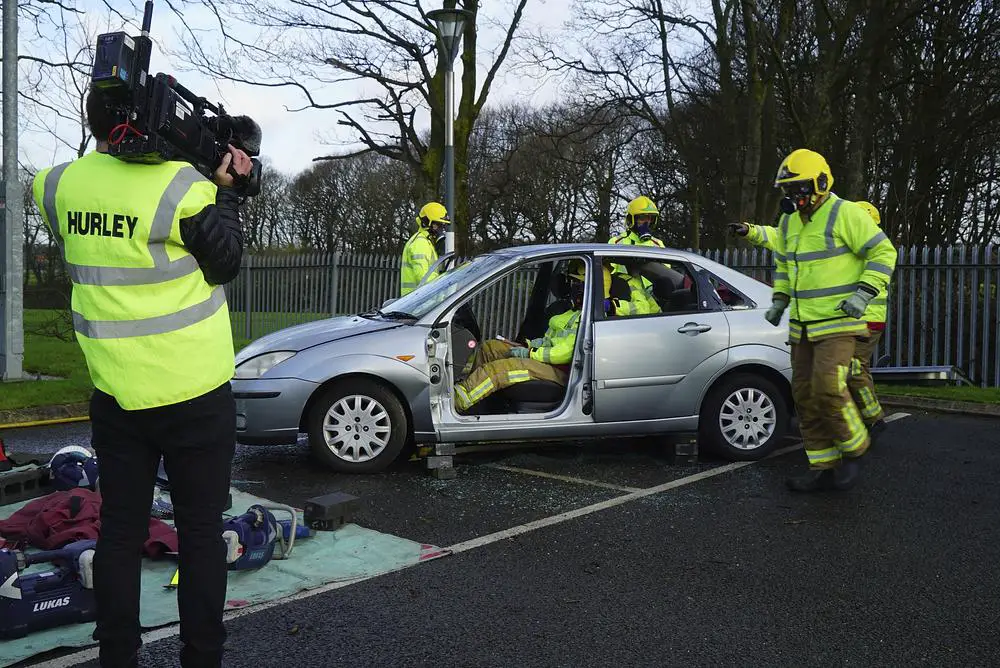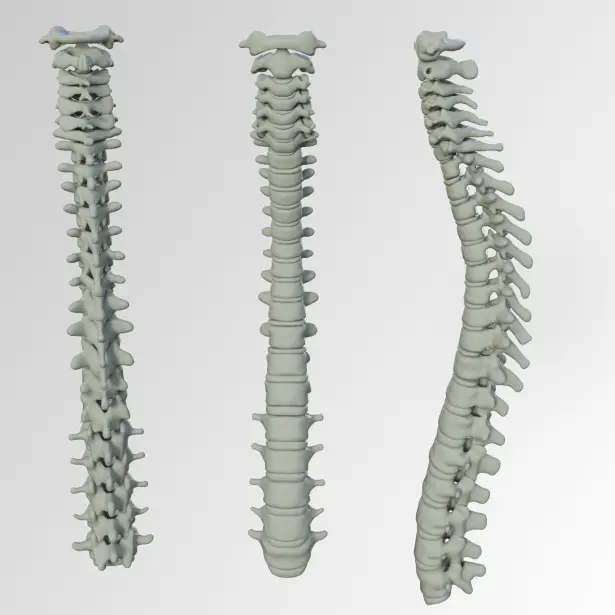Traction can be a helpful tool in managing the pain and discomfort caused by herniated disc. It is a therapeutic procedure that applies gentle force to the spine in order to reduce pressure on the affected discs.
Traction works by creating space between vertebrae, which helps to reduce inflammation and pain. This allows for improved mobility and flexibility, while promoting healing of the damaged discs. Traction can also help realign the spine, reducing further damage or deterioration of the herniated disc.
Additionally, traction may improve circulation in the area, allowing nutrients to reach the affected discs and aiding in their repair. While traction alone cannot cure a herniated disc, it can be an effective tool in helping to reduce symptoms and promote healing.
Can Traction Make Herniated Disc Worse?
When it comes to herniated discs, traction can be a double-edged sword. While traction can provide temporary relief from the pain associated with a herniated disc, it can also make the condition worse. Traction can cause further disc bulging and even rupture the disc if done incorrectly or too often. In addition, traction may cause an increase in inflammation around the affected area, leading to more pain and discomfort.
Therefore, it is important to consult with your doctor before attempting any type of traction therapy for a herniated disc. While traction might offer some short-term relief, its long-term effects could be detrimental to your health, so it’s better to stick with other conservative treatments such as physical therapy or medications instead.
How Long Does It Take For Lumbar Traction To Work?
Lumbar traction is a form of physical therapy used to relieve pain and pressure in the lower back. It works by stretching out the spinal joints, muscles and ligaments to reduce inflammation and improve circulation. While results vary from person to person, it usually takes several weeks of regular lumbar traction sessions before noticeable improvements are seen.
In some cases, symptoms may start to improve within a few days of starting treatment, while in others it may take 6-8 weeks or more before any relief is felt. The treatment plan should be tailored to each individual’s needs and monitored regularly by a trained medical professional.

How Long Should You Do Lumbar Traction?
Lumbar traction is a form of spinal decompression therapy that can be used to relieve lower back pain. While the exact duration of treatment depends on the severity of the individual’s condition and their response to treatment, it is generally recommended that individuals do lumbar traction for 10–20 minutes at a time, up to three times per day.
In addition to doing lumbar traction at home, some people may also benefit from visiting a physical therapist or chiropractor who can provide additional treatments such as ultrasound, electrical stimulation, massage, exercise, and stretching. It is important to consult with your health care provider before starting any type of treatment program so they can help provide guidance on how long you should do lumbar traction and what other treatments may be beneficial.
Can You Do Too Much Lumbar Traction?
Too much lumbar traction can be dangerous and should not be done without proper supervision.
Too much lumbar traction can cause injury to the spine, such as compressing the spinal cord or nerves, or even fracture of vertebrae. In addition, too much lumbar traction can also cause muscle spasms, pain in the lower back, and a decrease in flexibility in the spine. Therefore, it is important to consult with your doctor before attempting any form of lumbar traction. Your doctor will be able to determine what level of traction is safe for you and how long you should do it for.
If you are unsure about doing lumbar traction at home, it is best to seek advice from a physical therapist who will be able to provide guidance on how to perform lumbar traction safely and effectively.
Does Traction Work For Lower Back Pain?
Traction is an effective treatment for lower back pain, as it can help to reduce the pressure on nerves and provide relief from tension. This method of treatment works by stretching the spine, which can reduce swelling and tension in the muscles and ligaments. Traction can also be used to correct misalignments of the vertebrae, which can help to reduce pain and improve mobility. This type of therapy has been found to have positive results in relieving both acute and chronic lower back pain. Additionally, traction may improve circulation and aid in faster healing of the soft tissues that are affected by lower back pain. Ultimately, traction offers a safe and non-invasive way to treat lower back pain without the use of drugs or surgery.
How Effective Is Traction Therapy?
Traction therapy is a type of physical therapy used to treat musculoskeletal conditions and injuries. It involves using mechanical force to stretch and elongate the spine and other joints, which can reduce pain, improve mobility, and help correct posture. Studies have shown that traction therapy can be effective in reducing chronic lower back pain, as well as neck pain and headaches.
Traction therapy may also be beneficial for people suffering from herniated discs, sciatica, degenerative disc disease, and spinal stenosis. In addition, traction therapy has been found to be useful in treating some forms of arthritis, bursitis, tendinitis, and ligament strains. While it is not a cure-all for these conditions or injuries, traction therapy can provide significant relief from the associated pain and discomfort.
Why Does My Back Hurt Worse After Traction?
Traction is a form of therapy often used to treat back pain and spinal conditions. The force of gravity applied to the spine can help reduce pain, improve posture and alignment, and increase range of motion.
However, it’s not uncommon for some people to experience increased pain in the back after traction. This may be due to the fact that traction can cause muscles to become stiffer or tighter, which can increase pressure on nerves and aggravate already existing back pain.
Additionally, when traction is used in combination with other treatments such as physical therapy or massage therapy, those treatments may further aggravate the sore muscles in the back leading to more pain. If you experience increased pain after undergoing traction, it’s important to speak with your doctor about any additional treatments that may help alleviate your symptoms.
What Does Spinal Traction Do?
Spinal traction is a type of physical therapy used to treat back pain and other spine-related issues. It is a mechanical form of therapy that uses traction to stretch the spine and improve joint mobility. Traction therapy is commonly used to treat herniated discs, degenerative disc disease, and spinal stenosis. The stretches applied during traction therapy mechanically relieve back pain by stretching the spine, improving blood flow and increasing range of motion.
This can help alleviate symptoms associated with certain conditions, like sciatica and scoliosis. In some cases, it may also help repair damaged tissues or promote healing after surgery. Spinal traction is a safe treatment option that can be used in combination with other forms of physical therapy or rehabilitation to improve overall health and reduce pain.
Who Is A Candidate For Lumbar Traction Therapy?
A candidate for lumbar traction therapy is someone who has a herniated disc, sciatica, or spinal stenosis in their lumbar region of the spine.
This type of traction therapy applies pressure to the vertebrae in order to decompress them and reduce the internal pressure on the herniated disc. It is a form of decompression therapy that can help relieve pain and improve mobility in those suffering from a lumbar herniated disc.
In some cases, it may even be used in conjunction with other treatments to provide long-term relief. Patients should consult with their doctor to determine if they are suitable candidates for this type of traction therapy before beginning any treatment program.
Types of Lumbar Traction
Lumbar traction is a type of physical therapy that can provide relief from lower back pain and other spinal conditions. It involves the application of a pulling force on the spine in order to decompress the vertebrae and discs, allowing for improved joint movement and decreased nerve root compression. There are two main types of lumbar traction: static and intermittent.
Static traction is a steady pull that is maintained for an extended period of time, while intermittent traction is more dynamic, with alternating periods of tension followed by relaxation. Both types can be applied manually or mechanically, depending on the severity of the condition being treated and the skill level of the therapist.
Lumbar traction has been shown to reduce pain, improve range of motion, decrease muscle spasms, and reduce inflammation in the affected area.




